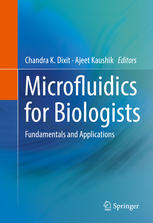

Most ebook files are in PDF format, so you can easily read them using various software such as Foxit Reader or directly on the Google Chrome browser.
Some ebook files are released by publishers in other formats such as .awz, .mobi, .epub, .fb2, etc. You may need to install specific software to read these formats on mobile/PC, such as Calibre.
Please read the tutorial at this link: https://ebookbell.com/faq
We offer FREE conversion to the popular formats you request; however, this may take some time. Therefore, right after payment, please email us, and we will try to provide the service as quickly as possible.
For some exceptional file formats or broken links (if any), please refrain from opening any disputes. Instead, email us first, and we will try to assist within a maximum of 6 hours.
EbookBell Team

5.0
98 reviewsThis book describes novel microtechnologies and integration strategies for developing a new class of assay systems to retrieve desired health information from patients in real-time. The selection and integration of sensor components and operational parameters for developing point-of-care (POC) are also described in detail. The basics that govern the microfluidic regimen and the techniques and methods currently employed for fabricating microfluidic systems and integrating biosensors are thoroughly covered. This book also describes the application of microfluidics in the field of cell and molecular biology, single cell biology, disease diagnostics, as well as the commercially available systems that have been either introduced or have the potential of being used in research and development. This is an ideal book for aiding biologists in understanding the fundamentals and applications of microfluidics.
This book also:
Describes the preparatory methods for developing 3-dimensional microfluidic structures and their use for Lab-on-a-Chip designExplains the significance of miniaturization and integration of sensing components to develop wearable sensors for point-of-care (POC)
Demonstrates the application of microfluidics to life sciences and analytical chemistry, including disease diagnostics and separations
Motivates new ideas related to novel platforms, valving technology, miniaturized transduction methods, and device integration to develop next generation sequencing